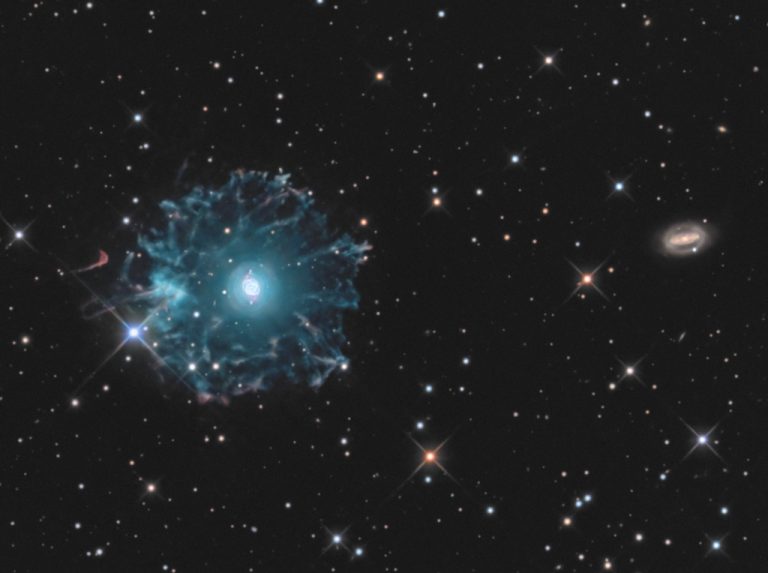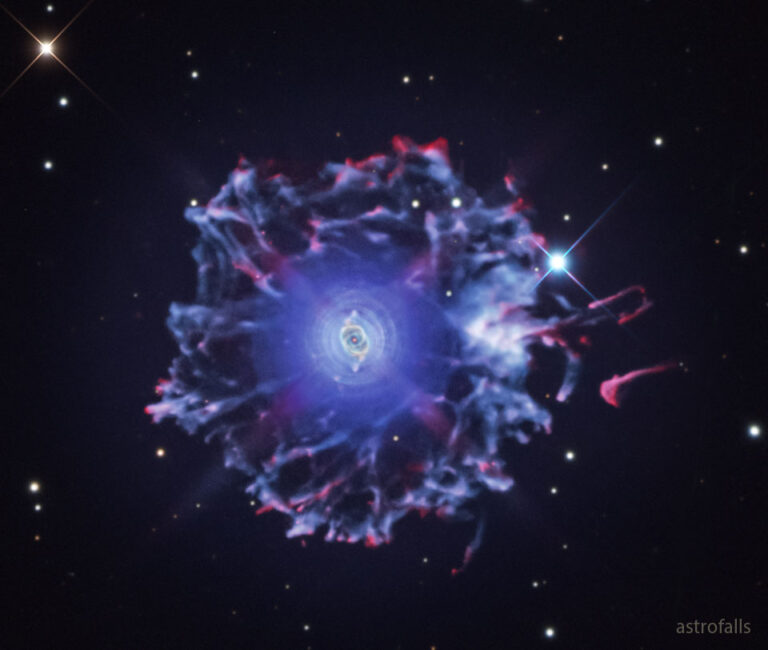猫眼星云: 可见光及X射线波段的景观
2024年1月7日 The Cat’s Eye Nebula in Optical and X-ray Image Credit: NASA, ESA, Hubble Legacy Archive; Chandra X-ray Obs.; Processing & Copyright: Rudy Pohl Explanation: To some it looks like a cat’s eye. To others, perhaps like a giant cosmic conch shell. It is actually one of the brightest and most highly detailed planetary nebula known, composed of gas expelled in the brief yet glorious phase near the end of life of a Sun-like star. This nebula‘s dying central star may have produced the outer circular concentric shells by shrugging off outer layers in a series of regular convulsions. The formation of the beautiful, complex-yet-symmetric inner structures, however, is not well understood. The featured image is a composite of a digitally sharpened Hubble Space Telescope…





